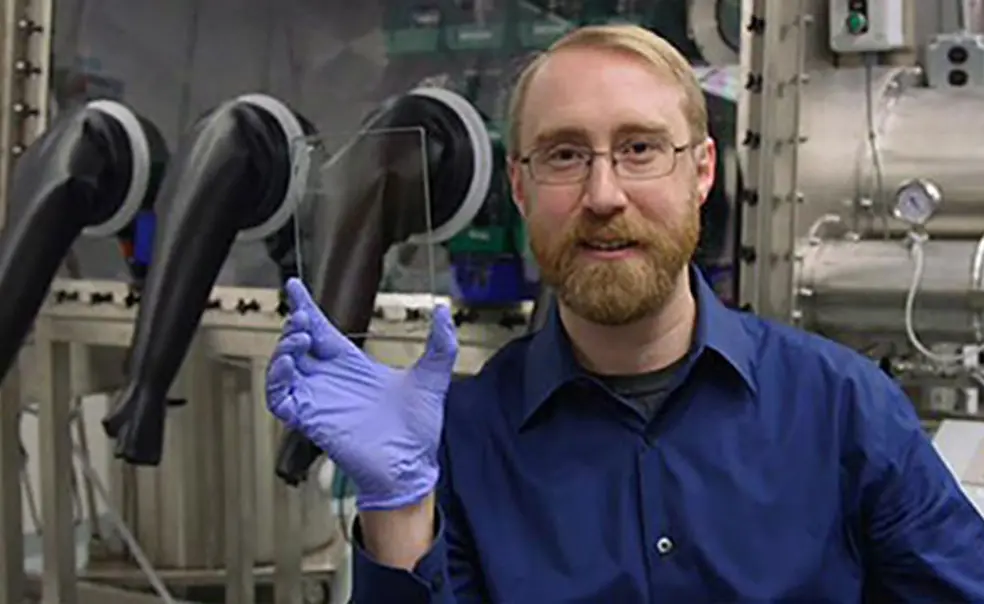Richard Lunt *10 Aspires To Produce Clear Energy with See-Through Solar
Solar power has gained ground in recent years, but continues to be difficult to deploy: Black panels work well on rooftops, but no one wants to cover a building with them, and for maximized efficient energy use, electricity needs to be generated close to where it’s used. Enter Richard Lunt *10.
Lunt, who holds a chemical engineering Ph.D. from Princeton and is an associate professor of engineering at Michigan State University, has invented the first transparent solar arrays. The arrays harvest energy from the parts of the solar spectrum that we cannot see — infrared and ultraviolet light — while allowing the part of the spectrum that we can see — sunlight — to pass through the material. During his postdoc at MIT, Lunt looked up at the glass buildings in Boston and wondered about if they could be transformed to collect solar energy.
So far, the answer seems to be yes. Lunt has developed two technologies: a film that acts as a transparent solar cell, harvesting the invisible parts of the light spectrum and converting them into electricity; and a solar concentrator that traps those wavelengths, using the technology similar to fiber optics, then directs them to a thin strip of conventional solar panels at the edge of the surface, where they are converted to electricity.
“Once you realize you can make this technology, you can deploy it anywhere there’s glass,” says Lunt. Small mobile electronic devices like phones could be fueled by solar power, so you’d have to plug them in less often or not at all. The windows of skyscrapers could generate a significant chunk of a building’s power, depending on its dimensions and other characteristics. It could help power cars if applied to their windows. “It could be applied to any space where you care about maintaining the underlying aesthetic, such as textiles and billboards,” he says.
Lunt has co-founded a company, Ubiquitous Energy, devoted to commercializing the technology, which in July announced another $15 million in financing, bringing total funding to more than $25 million. Lunt says they’re working with a variety of commercial partners, with the focus on large-scale uses, such as windows. (Manufacturing could be scaled up within the next few years, he says.) The company is also eventually planning to use the technology in small consumer electronics like smart watches, tablets, and phones. And while Lunt says solar arrays won’t be the only solar-power solution for the future, he expects it to be “a key tool for the green engineer’s toolbox.”












No responses yet